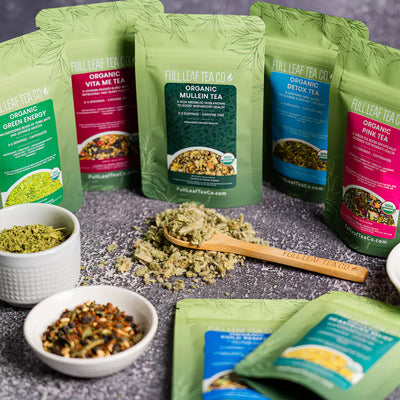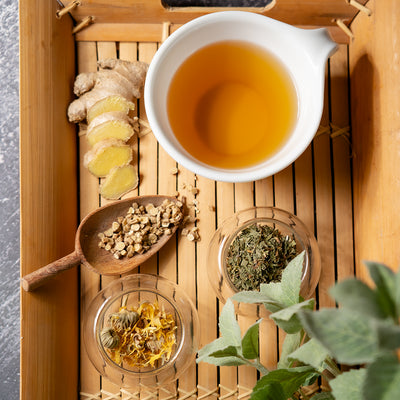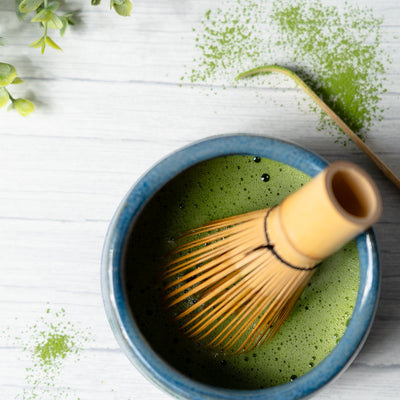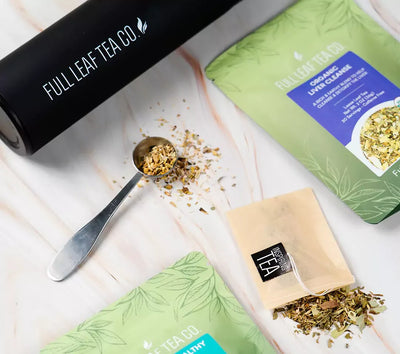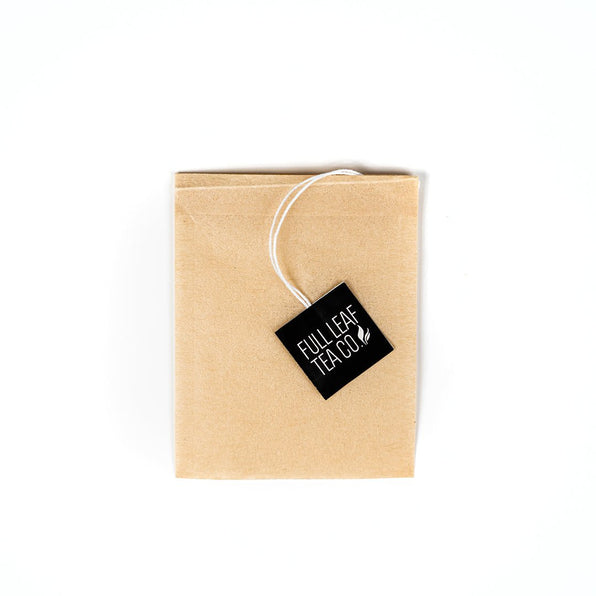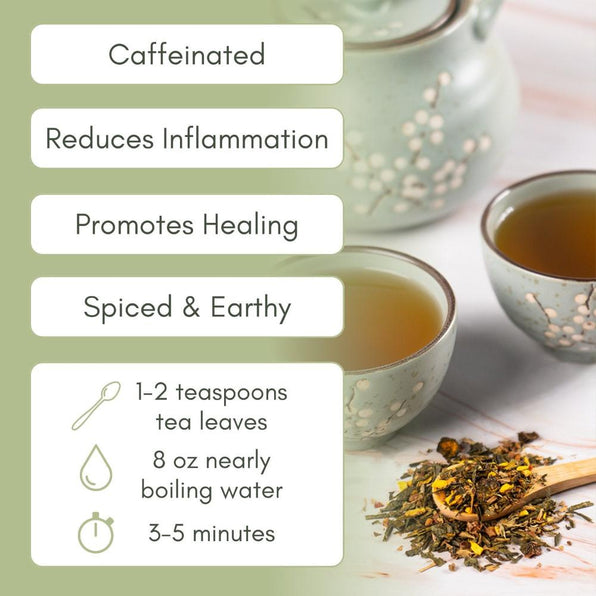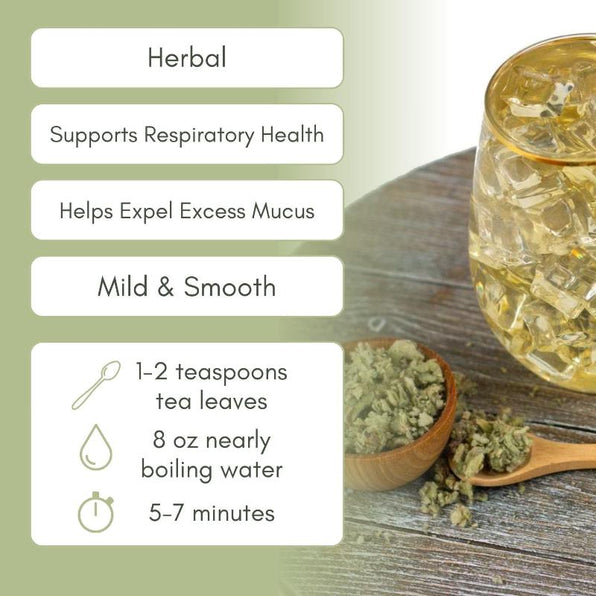Wellness Tea Pairings for Pain Relief
August is National Wellness Month and we are starting it off right! If you haven't seen our social posts, they will be linked below for you!
This blog is about our Wellness Tea Pairings for Pain Relief! We are going to look into which teas and herbs are best for pain relief as well as some tips and tricks that will help simplify and improve your wellness journey!
How can Herbs Help with Pain Relief?
Herbs have been used for centuries to help with pain relief due to their natural compounds that reduce inflammation, improve circulation, and offer pain-relieving properties. Many herbs contain anti-inflammatory compounds that can help alleviate pain from conditions like arthritis and other inflammatory diseases. For example, certain herbs are known for their ability to reduce swelling and inflammation, which are common sources of chronic pain. Others have analgesic effects, meaning they can directly reduce the sensation of pain, making them useful for general pain and soreness, including muscle and joint pain.
Some herbs work by affecting neurotransmitters that send pain signals to the brain, thereby providing relief from chronic pain conditions. This can be particularly useful for those suffering from long-term pain issues, such as migraines or nerve pain. Additionally, herbs with calming and soothing properties can help relax muscles and reduce tension, further contributing to pain relief.
Wild Lettuce
Wild lettuce, also known as Lactuca virosa, has been traditionally used for its pain-relieving properties. The plant contains compounds called lactucins and lactucopicrins, which have sedative and analgesic effects. These compounds interact with the central nervous system to reduce the sensation of pain, making wild lettuce a natural alternative to conventional painkillers. It is often used to alleviate pain associated with conditions such as arthritis, migraines, and muscle spasms. Additionally, wild lettuce's calming effects can help reduce anxiety and promote sleep, further contributing to its pain-relief benefits.
Devils Claw
Devil's Claw, known scientifically as Harpagophytum procumbens, is a herb renowned for its pain-relieving properties, particularly in managing arthritis and lower back pain. The key active compounds in Devil's Claw are harpagosides, which have strong anti-inflammatory and analgesic effects. These compounds help reduce inflammation, a common source of pain, by inhibiting the production of inflammatory chemicals in the body. This reduction in inflammation leads to decreased swelling and pain in affected areas, providing relief from conditions like osteoarthritis and muscle pain.


Tips and Tricks for Pain Relief
Mindful Movement
Tai Chi:
Tai Chi is a low-impact exercise that combines slow, deliberate movements with deep breathing and mindfulness. It enhances flexibility, balance, and muscle strength without stressing the joints, making it ideal for those with chronic pain like arthritis. The rhythmic breathing promotes relaxation and reduces stress, further alleviating pain and improving overall well-being.
Combine these with Organic Anti-Inflammatory Tea for a soothing experience with a caffeine boost!

Walking Meditation:
Walking meditation involves focusing on each step and breath, bringing mindfulness to the act of walking. This practice promotes relaxation, reduces stress, and helps manage pain by shifting attention away from discomfort. It enhances body awareness and helps release tension, contributing to overall physical and mental well-being.
Hot and Cold Therapy
Hot and cold therapy are effective methods for pain relief because they target pain and inflammation through different mechanisms. Hot therapy increases blood flow to the affected area, delivering more oxygen and nutrients, which promotes healing and relieves pain. It also helps to relax muscles, reducing spasms and stiffness, which is beneficial for chronic conditions like arthritis. Cold therapy, on the other hand, constricts blood vessels, decreasing blood flow and reducing inflammation and swelling, making it particularly effective immediately after an injury. It also numbs the affected area, slowing down nerve impulses to alleviate acute pain. Using a combination of hot and cold therapy can be especially effective, as it addresses both inflammation and muscle stiffness. This approach provides comprehensive pain relief and promotes healing, making it a simple and accessible option for managing pain at home.

Proper Posture
Good posture is essential for preventing and reducing pain. Focus on proper alignment while sitting, standing, and lifting. Ensure your back is straight, shoulders relaxed, and feet flat when sitting. Stand with weight evenly distributed and avoid locking your knees. Ergonomic adjustments at work, such as using a supportive chair and positioning your computer screen at eye level, can also help maintain good posture and reduce strain on your body.
Enjoy a cup of our Organic Migraine Relief, perfect for sipping as you focus on maintaining good posture!

Anti Inflammatory Diet
Incorporating anti-inflammatory foods into your diet can significantly contribute to reducing inflammation and alleviating pain. Foods such as turmeric, ginger, leafy greens, berries, and fatty fish are rich in anti-inflammatory compounds that can help manage chronic inflammation and associated pain. Turmeric contains curcumin, a powerful anti-inflammatory agent that can reduce joint pain and stiffness. Ginger has gingerols and shogaols, which have been shown to decrease muscle pain and soreness. Leafy greens like spinach and kale are packed with antioxidants and vitamins that combat inflammation. Berries, including blueberries and strawberries, are rich in antioxidants like anthocyanins, which help lower inflammation. Fatty fish, such as salmon and mackerel, are high in omega-3 fatty acids, which are known to reduce inflammation and support heart health.
Pain Relieving Yoga and Regular Exercise
Restorative Yoga Poses:
Restorative yoga promotes relaxation and alleviates pain. Try poses like Child’s Pose to stretch the back and hips, Reclining Bound Angle Pose to open the hips and chest, and Legs-Up-The-Wall to soothe tired legs and lower back pain. These poses reduce stress, improve circulation, and enhance well-being.
Gentle Flow:
A gentle yoga flow can improve mobility and reduce stiffness. Incorporate Cat-Cow to warm up the spine, Downward Dog to stretch and strengthen the body, and Seated Forward Bend to relax the spine and hamstrings. Regular practice enhances flexibility, posture, and overall balance.
Maximize the benefits of your exercise routine by combining restorative yoga poses and gentle yoga flows with a soothing cup of Organic Pain Relief Tea.

Low-impact exercises such as swimming, cycling, or walking are excellent choices for maintaining mobility and reducing pain. These activities are gentle on the joints while still providing a good workout, making them ideal for individuals with chronic pain or conditions like arthritis. Swimming offers buoyancy that supports the body and minimizes joint stress, cycling provides a smooth motion that enhances cardiovascular health, and walking is an easy, accessible way to stay active and improve overall fitness.
These statements have not been evaluated by the Food and Drug Administration. These products are not intended to diagnose, treat, cure, or prevent any disease.

